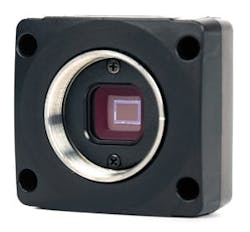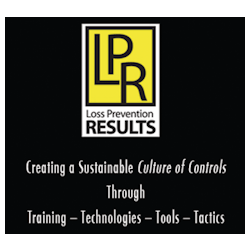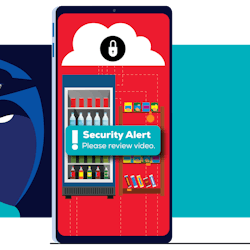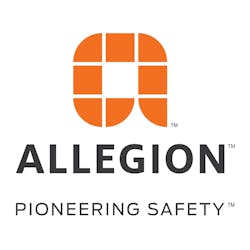It is bad enough to be the victim of a thief — but it’s even worse to be cheated by one of your own. Employee theft can take many forms from skimming cash to using the vehicle inappropriately. This internal theft can be hard to quantify and prosecute. In this challenging business environment, however, stopping it and preventing future losses is a must.
SECURITY = SAVINGS
“It (Internal security) was a significant investment,” said Jeff Smith, president, All Star Services Inc., Port Huron, Mich. Smith first considered it when he wanted to reduce his cost of goods. After conversations with other vendors, he invested in technology.
“We bought cameras over $1,000 each, the size of a pen but with great resolution. And the GPS systems cost about the same,” said Smith. In addition, Smith changed the procedures in his warehouse, limiting the personnel admittance, and established better cash handling systems.
“Most vendors would say their systems are tight, but consultants use the statistic that 13 percent of people will steal from you,” said Smith.
With the help of law enforcement, Smith recently caught an employee costing the company $8,000. According to Smith, this type of money adds up fast when there are $2 and $3 shortages each time.
The theft can be felt in other losses, too. “Internally it’s not just theft of money, but wasting time, gas, or several things coupled together,” said Smith. “We are turning over every stone we can (to use security as a money saving technique),” said Smith.
PROACTIVE DECISION
“Internal is much more expensive than external
theft,” said Tom Whennen, president of Triple A Services, Romeoville, Ill. He started a loss prevention program in 2006. “We wanted to control the environment, rather than putting out fires and reacting to emergencies,” he said.
Whennen installed cameras and alarms in his facility. He purchased GPS systems and covert, internal cameras for machines. He also evaluated all areas for potential loss, including gas and phone usage. “We let employees know we have zero tolerance (for theft). They’ll be led out in handcuffs. That includes reckless driving, filling up (for personal use) with the company gas card, cell phone minutes, etc.,” said Whennen.
Whennen planned his reorganization as a way to prepare for future growth. Loss prevention techniques helped him lower his cost of goods more than 2 percent.
The cost of implementing loss prevention procedures and equipment was only 20 percent of Whennen’s return on investment, based on increased revenue after the internal security measures were used. “That (the return on investment) was just (the theft) I found and stopped, but not (the theft) we’re preventing,” said Whennen. “If companies aren’t focusing on it (internal security and loss prevention) now, they will be. It makes a huge difference.”
HIRING THE RIGHT PEOPLE
Some argue that theft can be prevented by hiring honest people. Daniel Braker, manager at Beaver Vending, Beaver Dam, Wis., lives in a small community. “In this town, we know practically everyone,” he said. But hiring an honest driver is still a problem for him. We try to hire someone we know, although that’s not always successful,” he added.
Because most of his machines are indoors and well supervised, Braker has more problems with internal theft than external theft. Challenges include gathering evidence and prosecuting the thief.
Braker had one driver whom he suspected of skimming money, but couldn’t prove it. This route driver was eventually fired for other reasons and the route’s revenue increased. However, Braker is unsure if the increase is due to better management of a combination machine on the route, or the elimination of internal theft.
USE PROFESSIONALS
There are screening tools available to measure employee integrity. Profiles International Inc., a provider of employee assessment instruments and a National Automatic
Merchandising Association Business Partner, has questionnaires specifically geared towards vending. Part of the questionnaire targets potentially untrustworthy employees by measuring integrity, substance abuse, reliability, and work ethic.
Profiles International claims that 56 percent of employees admit to lying to a boss and 35 percent have stolen on the job. The questionnaire is designed to uncover unethical attitudes. It also calculates inconsistencies in answers to questions.
“You will have about a 15 percent chance of getting a person who will succeed in the long term,” said Dave McCaffrey, a vending industry veteran who represents Profiles International.
While employee success involves more than just not stealing, it is an important thing for an employer to consider. It’s hard to know how honest someone is by interviewing him or her.
LOSS PREVENTION STARTS WITH PROSECUTION
Mark Manney, CEO of Loss Prevention Results Inc., based in Hickory, N.C., believes the majority of people will steal if they see others doing so. “66 percent of people sit on an integrity fence,” explained Manney, “If they see the 13 percent (who will steal no matter what) stealing and getting away with it, they will do it too.”
Manney’s solution is prosecution. He compares handling a theft case, especially internal theft, to climbing the rungs of a ladder. First there is the base rung — suspicion. That is followed by probable cause, evidence, interrogation, the case jacket and working with police. “You have to hand it to police on a silver platter tied with a pink ribbon,” said Manney. “Police just don’t have the time to investigate it (vending theft).”
THE INVESTIGATIVE LADDER
In Manney’s ladder of investigation, suspicion is the first and probably the easiest rung. Operators know when they have a loss from reviewing reports or meter readings. “It’s not just money, but also productivity, waste, fuel, etc.,” said Manney. “Operators see a 1 to 3 percent cost of goods reduction in two to four quarters,” said Manney, drawing on his experience helping operators in loss prevention. “The theft is so overwhelmingly internally that that is what I focus on.”
Probable cause is the next rung and involves narrowing the theft down to a single suspect.
Next is the most important rung, the evidence. This should be an operator’s number one concern because it helps law enforcement prosecute, makes it difficult for thieves to wriggle out of accusations, and prevents the dreaded liability issue.
INTERROGATION: AN ART FORM
Following good strong evidence is the interrogation. “Interrogation is a skill and an art,” said Manney, “not everyone can do it.” There’s a liability risk if you don’t have the proper evidence. There’s also a risk from the accused. Manney has had a few people ready to fight him physically and two who just ran away. “Their (thieves’) number one fear is prosecution,” Manney said. Most operators don’t know how to confront a driver stealing from them. They’ll write them up and scold them, but it is only a temporary fix. Operators in these cases will want to ask a professional or police officer to handle the interrogation part.
Packaging the theft, evidence and results of the investigation into a report is the last rung, the case jacket. This is what you present to law enforcement for prosecution. Manney has spent many years working with police to perfect the case jacket. He once worked with some police who weren’t very helpful at first, but once he showed them the case jacket, they were more willing to assist. “The case jacket is critical to getting the police involved,” said Manney.
Manney asks police to assist him at the vending operation. He prefers a public prosecution to show the rest of the employees the consequences of stealing.
Manney recently completed a case in Michigan where he helped an operator gather evidence against a route driver. He made plans to confront the driver in an interrogation. Before it was going to take place, he called the local police and told them what he was going to do. He asked that an officer come to escort the person off the premises with a written criminal trespass warning; they would be arrested if they ever stepped foot on the premise again. Manney also alerted a detective in the jurisdiction where the theft took place.
In the Michigan case, the evidence only pointed to a certain amount of theft, but Manney got the thief to admit to stealing more. The driver was escorted out of the building by two uniformed officers in front of the other employees. Manney timed it to occur when the route drivers got back from their routes.
The 66 percent of employees on the integrity fence won’t climb down the wrong side if they know there are consequences for their actions, Manney said. They will
not steal if the consequences are harsh. Prosecute, and as publicly as possible, is Manney’s feeling. That’s the idea at the core of loss prevention.
As a cash-based business, vending attracts some criminally minded persons, said Tim Boles, operations manager and loss prevention director for Williams Food Service Inc. in Louisville, Ky. Even with background checks, unscrupulous employees still slip through. Because route drivers handle money and carry keys, the temptation is there, said Boles.
Boles makes the argument that internal theft is harder to catch than external theft. External theft can be as simple as attaching a pinpoint camera into a machine, and since crooks usually return to the scene of the crime, you’ll have your evidence, either with theft or vandalism. But internal theft requires more finesse.
THE POLICE NEED YOUR HELP
In Boles’ experience, law enforcement is cooperative, but not proactive. “Honestly, you have to do 99 percent of the work,” said Boles. He believes police don’t view vending crimes as critical as other crimes, such as armed robbery, so it doesn’t rank as high on their priority list. “They’re busy,” he conceded. But when law enforcement is handed the case jacket, police will handle the prosecution. Boles has occasionally hired off duty cops to help him with theft and vandalism. “It seems to speed up the process,” he said.
Internal security is an investment, but most operators see a return. The tightening of costs and weeding out of dishonest people makes the operation stronger. By rewarding the good and prosecuting the bad, loss prevention ensures less theft in the future.
For additional information, contact:
Mark Manney, Loss Prevention Results Inc., 919-554-1194 or [email protected],
www.losspreventionresults.com
Dave McCaffrey, Profiles International, 630-941-3469 or [email protected]









